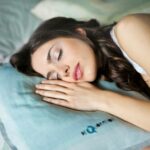The Green Symphony: Can Plants Talk to Each Other? Unveiling the Intricacies of Plant Communication

The notion of plants engaging in complex forms of communication has long fascinated scientists and nature enthusiasts. While devoid of auditory capabilities, plants possess intricate systems that allow them to transmit and receive signals, facilitating a dynamic network of interaction within their ecosystems. Let’s delve into the captivating world of plant communication, exploring the fascinating mechanisms and behaviors that underscore their ability to convey information and respond to their surroundings in remarkable ways.
Roots of Communication: Uncovering the Language of Plants
Contrary to conventional notions, plants communicate through a sophisticated blend of chemical, electrical, and mechanical signals, fostering intricate relationships and interactions with neighboring flora, as well as the diverse organisms in their environment. From emitting chemical cues to sending electrical impulses through their roots, plants establish a complex web of communication that enables them to convey vital information, such as the presence of potential threats, resource availability, and environmental changes.
Chemical Conversations: Harnessing the Power of Volatile Organic Compounds
Plants release volatile organic compounds (VOCs) into the atmosphere, signaling a wide array of messages to nearby plants and organisms. These chemical emissions can serve as warnings of impending dangers, such as herbivore attacks or pathogen infestations, prompting neighboring plants to activate defense mechanisms and fortify their resistance against potential threats. By harnessing the power of VOCs, plants orchestrate a nuanced system of communication that fosters collective defense and resilience within their communities.
Root Networks and Fungal Alliances: Nurturing Interconnected Relationships
Below the surface, intricate root networks and symbiotic fungal partnerships enable plants to exchange essential nutrients, chemical signals, and vital information with their neighboring counterparts. Mycorrhizal networks, for instance, facilitate the seamless transfer of resources and messages between interconnected plants, fostering a mutually beneficial alliance that enhances their collective growth, resilience, and adaptability to changing environmental conditions.
Response to Environmental Cues: Adapting to Surrounding Stimuli
Plants demonstrate a remarkable capacity to respond to various environmental stimuli, including changes in light, temperature, humidity, and the presence of neighboring plants. Through intricate signaling pathways and hormonal responses, plants can adjust their growth patterns, flowering cycles, and defense mechanisms in real-time, optimizing their chances of survival and reproduction in dynamic and competitive ecosystems.
The Silent Language of Nature: A Testament to Ecosystem Harmony
The intricate web of communication among plants serves as a testament to the profound interconnectedness and resilience of natural ecosystems. By deciphering the subtle language of plants, we gain a deeper appreciation for the harmonious relationships and intricate dynamics that define the natural world. From fostering mutualistic alliances to orchestrating collective defense strategies, plants epitomize the remarkable art of communication, perpetuating the delicate balance and biodiversity that sustain life on our planet.
Picture Courtesy: google/images are subject to copyright








